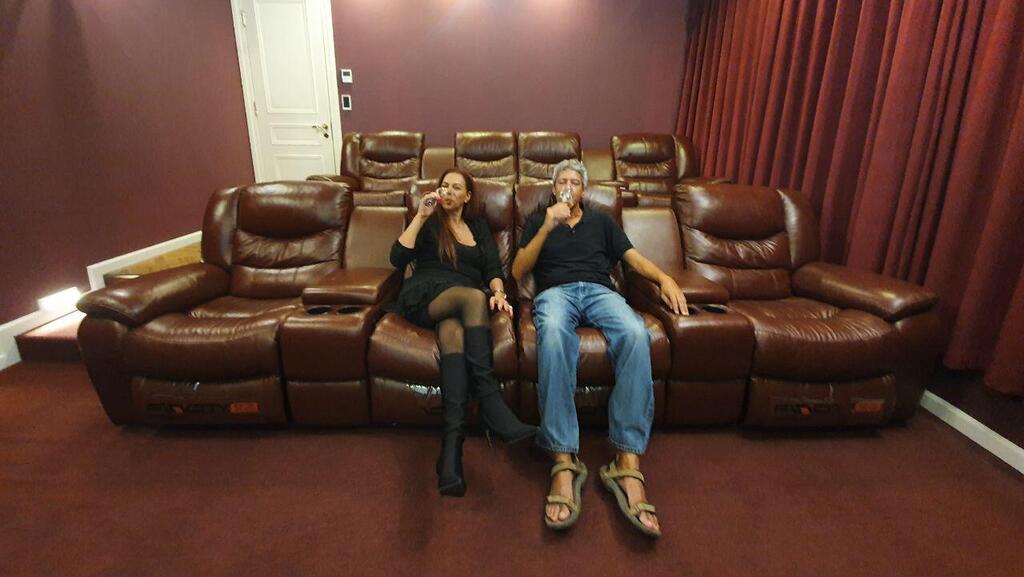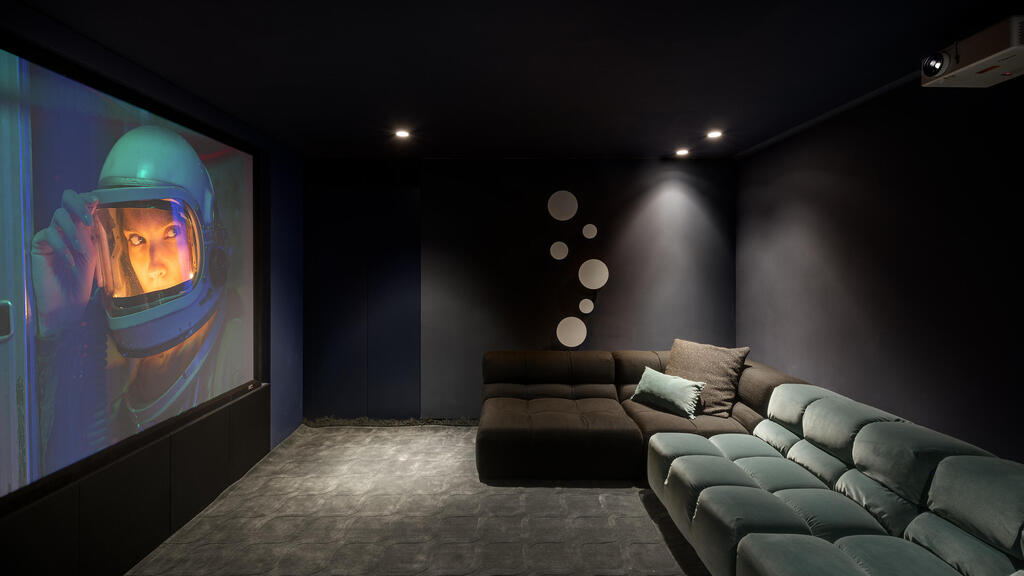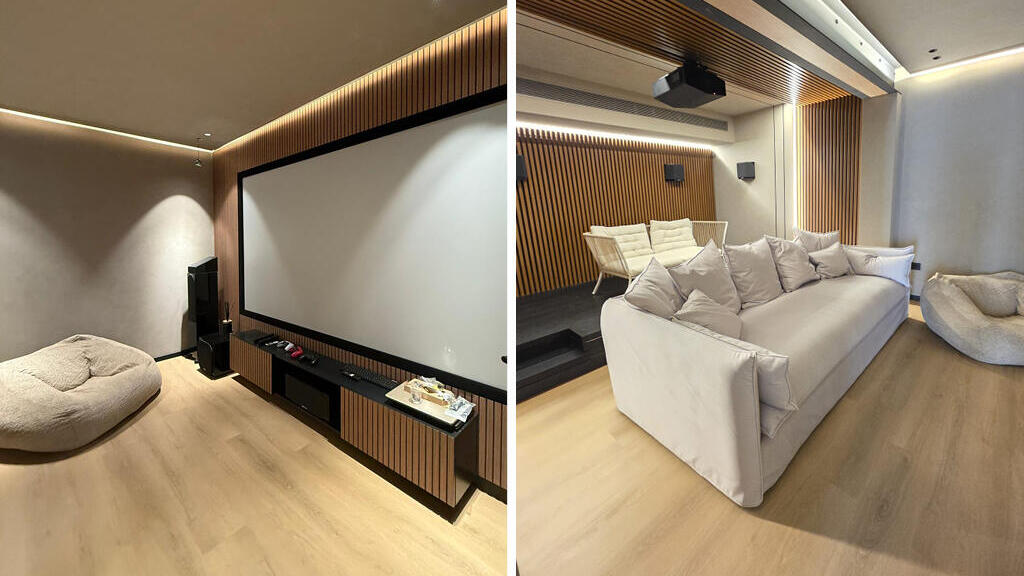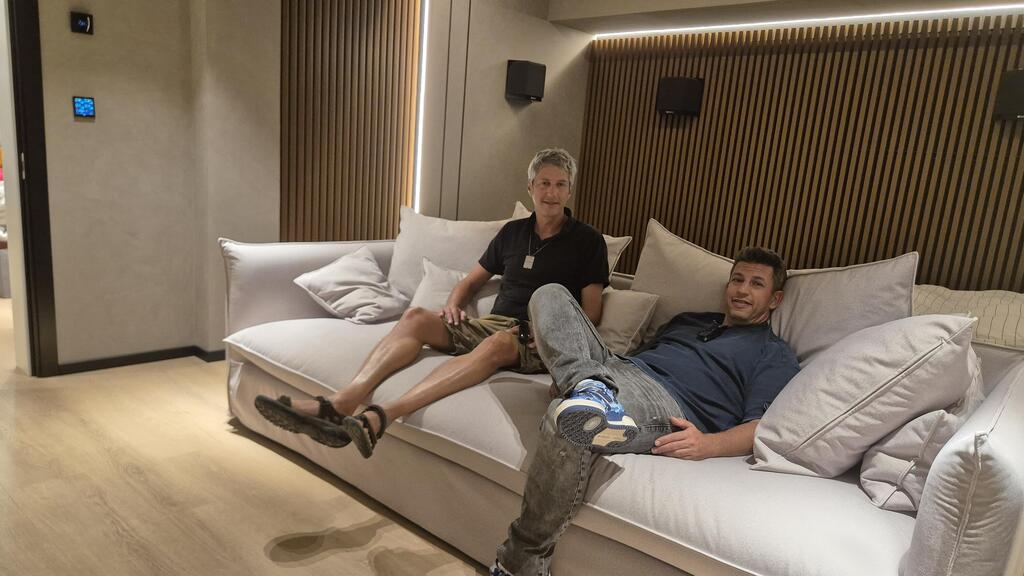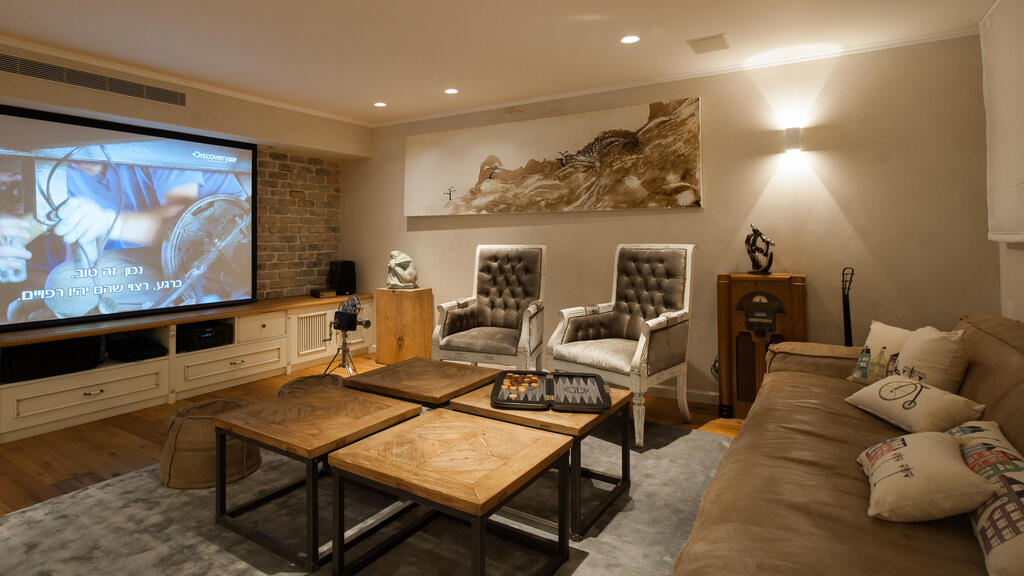In a luxury villa neighborhood in central Israel, deep underground, lies a quiet and lavish bomb shelter, unlike anything most Israelis are used to. Spanning 25 square meters, it’s a fully-equipped private home theater with top-tier acoustics. This is just one of the fortified rooms visited by this writer during the war with Iran.
The room belongs to a family from Israel’s financial elite, who asked to remain anonymous, including the name of their town. The luxury cinema bunker isn’t the only indulgence in the villa—there’s also a swimming pool and various leisure facilities. When this journalist visited, there was no active air raid siren, but they rushed to the family’s luxurious safe room to get a closer look.
“The house underwent major renovations, and we decided to dig a brand-new basement,” explained architect Ron Shpigel, who designed and remodeled the home. “The basement consists of two protected spaces—one is a standard, code-compliant safe room for sleeping, and the other is this large fortified area that we converted into a high-end, private cinema. It’s a fully concrete room dug into the ground, with no windows, but no one stepping in here would ever guess it’s a bomb shelter.”
So, how much does this kind of setup cost?
“The total investment—acoustics, design, hardwood floors, recliners, audiovisual system and finishing touches—was about half a million shekels,” Shpigel said. “Every detail was meticulously planned. There were no compromises. It’s a luxury experience—and a safe one.”
The underground acoustics create a deceptive quiet. I kept checking my apps to make sure I wasn’t missing an alert. Shpigel emphasized the use of premium materials: “The design combines acoustic wood panels, decorative textured concrete, high-quality wooden flooring, and a full cinema and surround-sound system. The walls and doors are engineered for complete acoustic sealing. It’s a real theater—just with extra protection.”
Still, not everything went according to plan, and not because of the war. Shpigel smiled as he shared a mishap: “The fancy recliners we ordered didn’t arrive due to the conflict.” Instead, he pointed to a raised platform in the large room where a temporary double bed had been set up for the grandparents who came from Bat Yam. “It became a surprise part of the experience. They feel safe here, are enjoying every moment, and watch movies every evening.”
Next to the underground theater, near the laundry room, is the family’s second safe room. In contrast, this one reflects the harsher reality of wartime: it includes a large double bed and two makeshift children’s beds. “This is a standard, code-approved safe room where the whole family sleeps during the war,” Shpigel noted. “It’s ideal—no need to wake up and run during sirens. Everything’s already protected. You can sleep here without even knowing what’s going on outside. There could be sirens, even missile impacts, and only in the morning, when checking your phone, do you realize what happened. It allows for total detachment from the war.”
Designing a shelter you’d want to be in
Interior designer Shirley Dan, who has designed dozens of luxury homes, offers her perspective. “In high-end homes, the safe room has become an ‘extra room’—not just a spare bedroom due to lack of space like in apartments. We always try to make the safe room larger and more pleasant. It can be a home theater, family room, or playroom. We use premium design: parquet floors, wallpaper, large screens, advanced sound systems—everything to make it feel nothing like a concrete basement or bomb shelter,” she said.
Conversations with Dan and Shpigel reveal that the fear of Iranian missile strikes has led the ultra-wealthy to demand even more elaborate safety solutions, without any budget constraints. “Today, people are much more concerned about safety and protection from direct hits,” Dan said. “The standard safe room no longer feels sufficient. I even had one client request a safe room on every floor of their villa. It might sound extreme, but it shows how heightened the awareness has become.”
Get the Ynetnews app on your smartphone: Google Play: https://bit.ly/4eJ37pE | Apple App Store: https://bit.ly/3ZL7iNv
Dan described one of her flagship projects in Herzliya Pituach, where an underground safe room was transformed into a luxurious cinema with motorized recliners, massive screens, ornate ceilings and fabric-covered walls that emulate the feel of an upscale movie theater. “The investment there was around a million shekels,” she said. “It’s a huge space that’s hard to believe is technically a bomb shelter. We use calming colors, drapes, soft wallpaper, wooden floors and warm materials. A safe room should never feel like a storage room.”
The rise of the 'atomic shelter' trend
What about the new demand for atomic shelters?
“Following the recent war with Iran, we’re already getting requests for more advanced solutions than the standard safe rooms,” Dan said. “Clients are telling me the standard model isn’t enough—they want atomic shelters. We’re already designing such rooms in several basements, with stricter building regulations: thicker and denser concrete, specialized air filtration systems, and even water systems designed for extended stays in case of radioactive exposure.”
And now, some good news for Israel’s billionaires: In response to growing demand, a new regulation now allows private safe rooms to be fitted with bathrooms and showers for the first time. “That’s the ultimate luxury,” Dan said. “People spent hours, even days, in their safe rooms during the last war, and that led to the approval of this new standard—one that allows for far more comfortable living conditions.”


